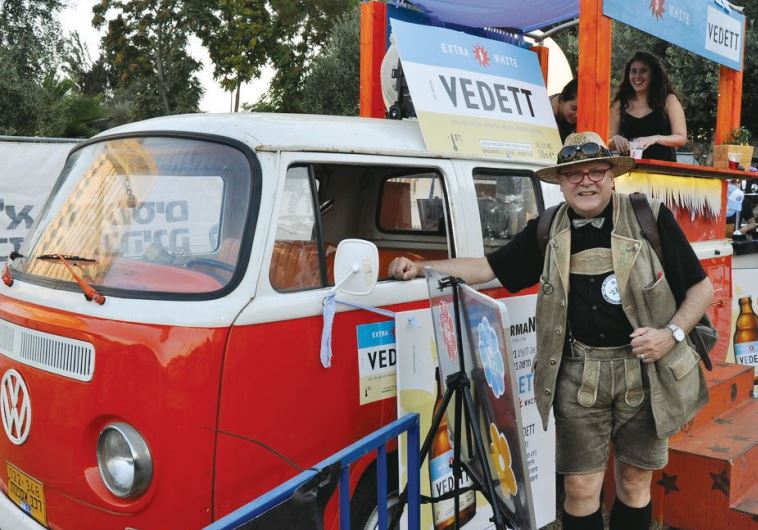The laws of (beer) purity
A new exhibition at the Jewish museum in Munich commemorates 500 years of authentic alcohol distillation and the tribe’s involvement in it
 Conrad Seidl (the ‘beer pope’) in his Tyrolean lederhosenat the Jerusalem Beer Festival(photo credit: MIKE HORTON)
Conrad Seidl (the ‘beer pope’) in his Tyrolean lederhosenat the Jerusalem Beer Festival(photo credit: MIKE HORTON)